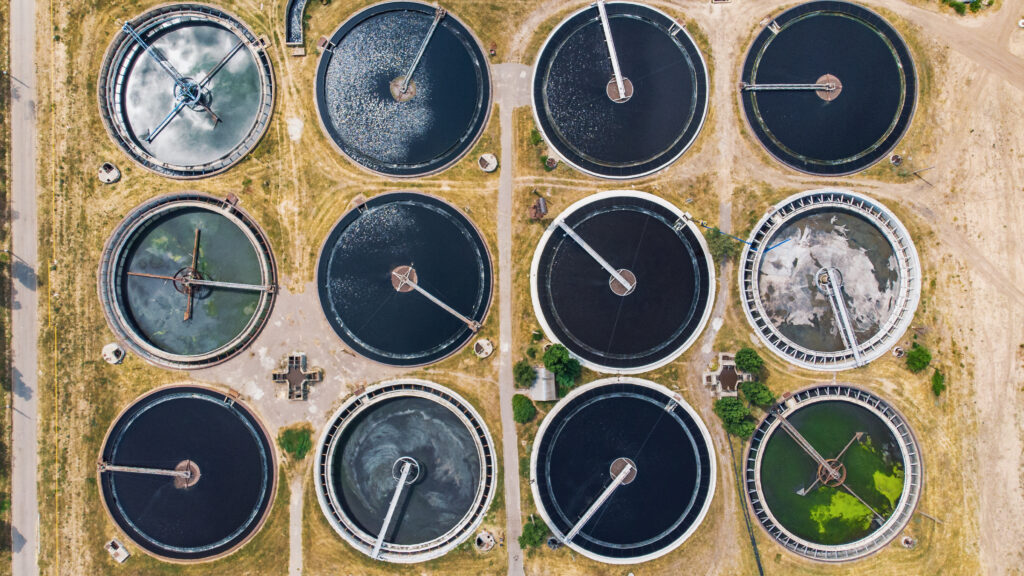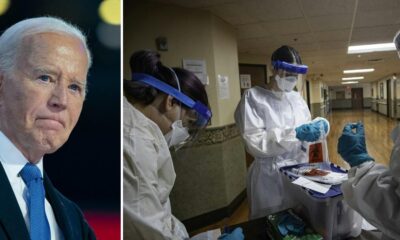Health
Wastewater monitoring group cuts off many pathogen detection locations

WastewaterSCAN, one of the nation’s largest private entities that provides real-time data on pathogens in wastewater, has stopped collecting data from 43 facilities due to “resource constraints,” according to emails the company sent to staff that oversaw these locations.
The group – based at Stanford University, in collaboration with Emory University – had collected samples from 194 locations in 41 states and the District of Columbia, an area of 39 million people. Alexandria Boehm, a founding member and professor of civil and environmental engineering at Stanford University, said the program is shifting gears to focus on other projects that would “disrupt” the wastewater monitoring industry. They will still collect and publish data from 151 sites and have no plans to reduce that number further.
WastewaterSCAN started in 2020 with eight facilities and expanded with philanthropic funding from the Sergey Brin Family Foundation and Bloomberg Philanthropies. As to whether a cut in funding led to the withdrawal, Boehm said: “The funders have been extremely generous and supported this work in a way that just blows my mind. I don’t really have an answer for you.”
Wastewater monitoring has been quite valuable during the Covid pandemic, which is why some experts fear WastewaterSCAN could pull out indicate a reduced willingness to finance this. It’s not limited to private investors, either: The main federal wastewater monitoring program lacks a dedicated funding source for the future. And a changing political climate is adding to uncertainty, especially at a time when infectious disease experts are closely watching the avian flu outbreak in cattle.
The use of wastewater monitoring expanded and improved after Covid swept the country in 2020 and citizens and scientists needed more information to stay safe. The information shed in the toilet can give communities a look at the caseload days in advance. And for the fifth summer in a row, Covid cases are rising again – especially in western states. Deaths remain low, but hospital admissions are increasing and the threat of long-term Covid-19 remains.
A spokesperson for the Centers for Disease Control and Prevention said they do not expect this data loss, resulting from WastewaterSCAN reducing the number of sites they monitor, to have a significant impact on the agency’s National Wastewater Surveillance System.
“CDC is actively working with affected states to provide opportunities to add sites as needed through the CDC National Wastewater Testing Contract, ensuring comprehensive and continuous monitoring,” they wrote in an email.
The CDC’s surveillance system implements the lion’s share of wastewater monitoring in the country. They also provided a financial foundation that many states used to set up their own systems. But the system will only be funded until 2025. Epidemiologist David Larsen of Syracuse University is not particularly optimistic about the program’s survival if former President Donald Trump were to win in November.
“Drying up is not quite the right term, because [wastewater surveillance] isn’t going away,” says Larsen, who has helped New York scale up its monitoring system. “But it is getting less.”
The NWSS collects data from approximately 1,400 facilities and includes information from state and local health departments, many of which have their own programs. But the CDC’s data is limited because protocols and techniques for analyzing samples can vary from entity to entity. The GGD also only analyzes a few pathogens: SARS-CoV-2, mpox, Influenza A, H5.
Meanwhile, WastewaterSCAN monitors more pathogens and at higher frequencies than the CDC. This proved extremely useful for capturing those of the country mpox outbreak and the H5N1 outbreak earlier this year, said Marc Johnson, a virologist at the University of Missouri.
“The CDC can’t just snap its fingers and let Nebraska build a new H5 lab. It’s going to be difficult,” said Johnson, who also likened the CDC to a slow-moving tank. “But [WastewaterSCAN] comes there.”
Johnson, who helps run Missouri’s surveillance program, doesn’t think a private company losing 43 facilities will dramatically change the nation’s daily and weekly snapshots of pathogens. However, he does believe that wastewater monitoring needs to be more evenly distributed across the country, and that WastewaterSCAN fills some geographic gaps.
“We study certain parts of the country while ignoring others,” he said.
WastewaterSCAN collects more than a third of its samples from facilities in California. They withdrew from more than half of California’s 59 locations. This reduction scared Patrick Vaughan, an engineer living in Northern California. He checks wastewater monitoring programs every morning with his coffee, so when he saw the update on the WastewaterSCAN website, he was filled with dread.
“I think I’m scared [Covid] is a very normal reaction,” Vaughan said. “The biggest threat that Covid poses is the mass shutdown of our society.”
Boehm said they reduced their stake in California because nearby facilities often show no meaningful difference in the viral load in neighboring communities. However, she acknowledged that these prospects vary by pathogen.
WastewaterSCAN isn’t the only private wastewater monitoring group. Biobot Analytics is a startup that has been tracking pathogens since 2020 and had a federal contract to analyze sample data for the CDC. That contract unexpectedly expired in 2023 and was instead awarded to Verily, an offshoot of Google. Also processes samples for WastewaterSCAN, but the two programs are separate.
Another reason Vaughan is concerned about the reduction is that WastewaterSCAN and Biobot provide more consistent data since they test in exactly the same way from the start – compared to the CDC, whose data comes from many different entities. Vaughan feels the CDC data is less reliable.
“We keep losing data and this is our last solid tool to know what’s happening,” he said. “I don’t want other people to be handicapped by it, and personally I don’t want to be handicapped by it either.”











